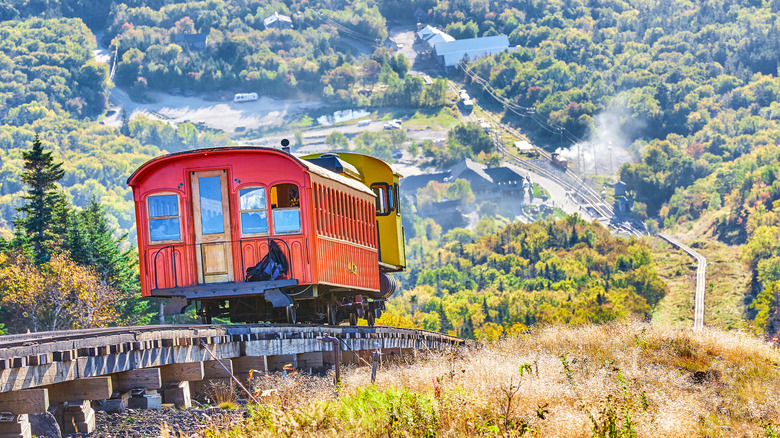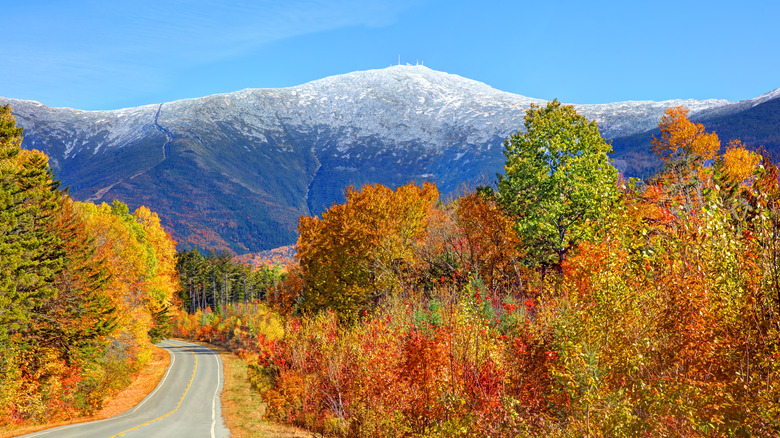The World's First Mountain Climbing Cog Railway Ascends New Hampshire's Highest Peak
To Native Americans, New England's highest mountain was called Agiocochook or "the place of the Great Spirit." Because of its sacred nature, most refused to climb the 6,288 feet to its treeless peak. The first ascent was credited to Darby Field, one of New Hampshire's first colonists, who made the climb in 1642, joined by local guides. However, historical researchers have questioned the credit given to Field, who had Native American guides, and posited Native Americans made the climb before Field. More summiteers followed Field after the opening of the 8.5-mile Crawford Path in 1819, spurring the development of northern New Hampshire for tourism. Fifty years later, the climb gained steam power with the Mount Washington Cog Railway, which has been ferrying passengers up the 3-mile track ever since.
Today, more than 150,000 people make the trip on the Cog annually. On the way, it passes through three distinct climate zones — Krummholz, boreal forest, and alpine — at angles up to 37.41 degrees. It's the "cog" that keeps the train safely on track. Below the engine is a large drive wheel with 19 cogs that fit into a special chain-like track just below, much like the way the crank of a bicycle slips into the chain that turns the wheels. It takes 70 minutes to go up the mountain and 60 to return down. With the hour layover at the peak, the total trip runs about three hours. Hiking up or down Mount Washington — the crown jewel of one of the most romantic mountain regions New England has to offer — is also possible, but requires a significant level of fitness, sufficient food and water to last 10 to 12 hours, and clothing that can withstand extreme weather events.
At the summit of Mount Washington
Perhaps the best summation of the Mount Washington summit came from showman P.T. Barnum, who called it "The second greatest show on Earth." The reasons why are still on panoramic display today in the sweeping views extending all the way to Quebec and the Atlantic Ocean. Railways riders can enjoy them all from the outdoor platform of The Sherman Adams Visitor Center, which houses a cafeteria, gift shops, the Mount Washington Observatory and a museum dedicated to the extreme weather the summit sees. Here, various exhibits educate visitors about how rime ice forms and the ways resident scientists observe and record the weather conditions. The visitor center is only open during peak season, which typically runs from about mid-May to mid-October.
Next to the weather station and observatory is the Tip Top House, a stone hotel built in 1853 for tourists. The building was the sole survivor of a 1908 fire that destroyed all other buildings on the summit. Later, the Tip Top House also burned. It was then abandoned in 1968, renovated in 1987, and re-opened again. At the time of this writing, however, it's closed for ongoing renovations. Visitors are welcome to explore the immediate area around these buildings but are warned not to stray far and miss the return train. To make the most of your trip to the Cog Railway, you can also head 36 miles northeast to Gorham, a New Hampshire town hidden in the heart of the White Mountains. If you're visiting during the fall or want to do some more sightseeing, a 20-mile drive will take you to Franconia Notch State Park, the New Hampshire state park that puts on the most vibrant show of fall foliage.

